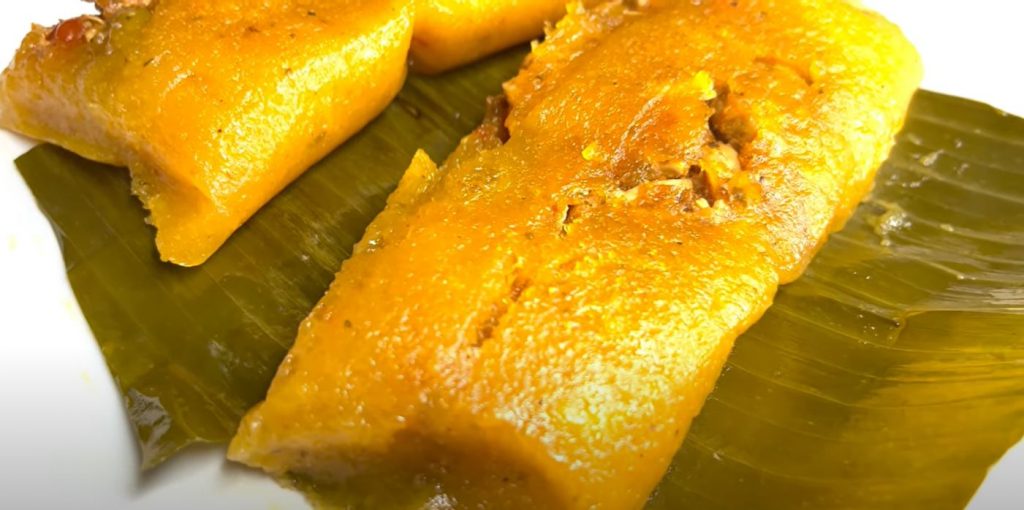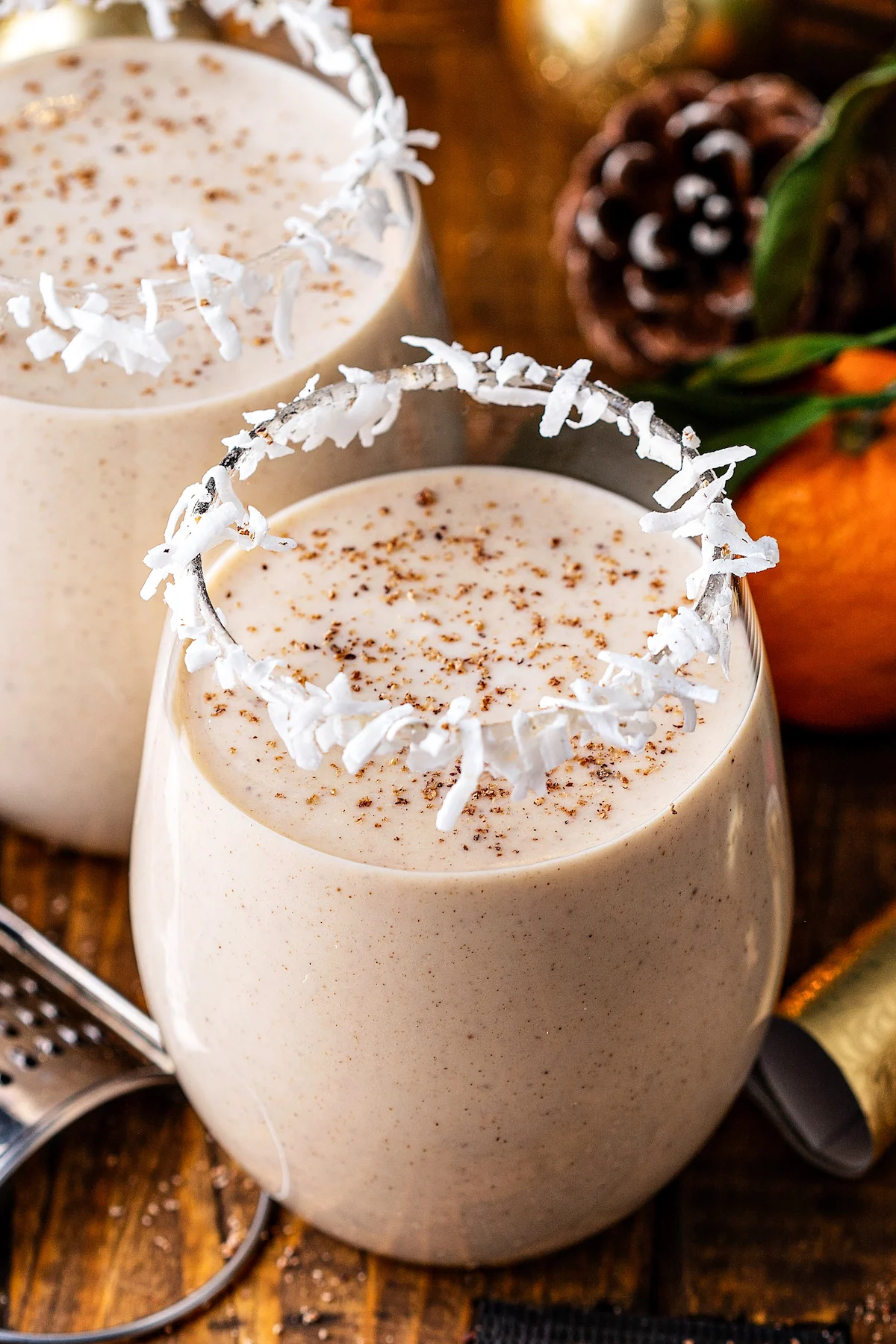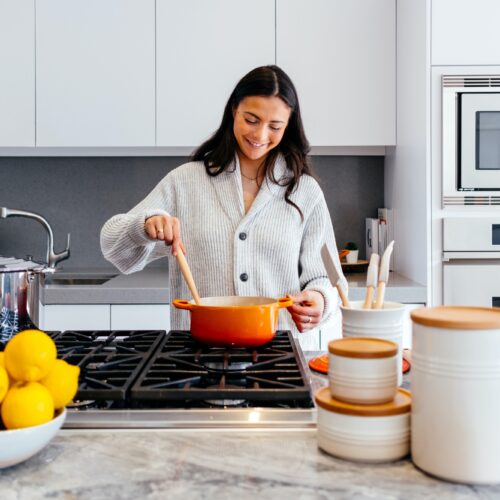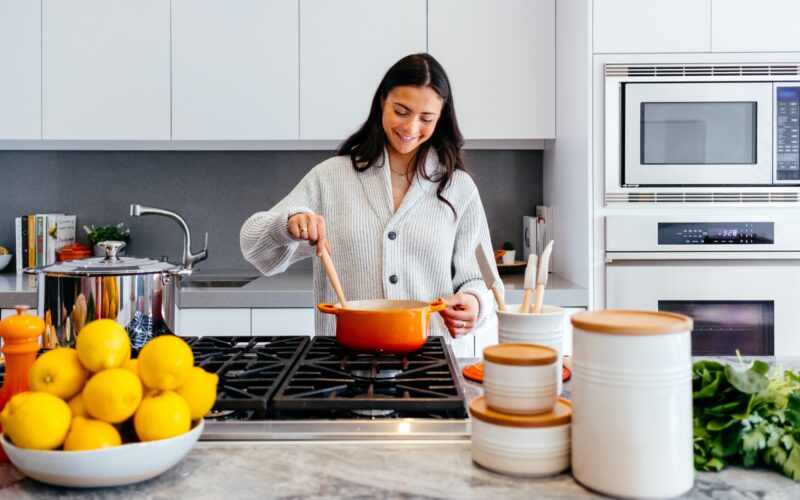The Latin community is one of the many culturally rich communities in the world. Colorful and flavorful customs lie at the heart of Latin cuisine. Growing up in a Latin home, holidays were always the best times of the year. It combined two of the most cherished values, loved ones and food. Food is love, and this season I’m going to share some traditional Latin cuisines that made our holidays bright.
Pasteles

Photo credit: Whats4eats.com
[Click the link above for their pasteles recipe]
Pasteles are one of those dishes where all hands must be on deck to make it. Titi’s and Tio’s (Aunts and uncles), Primo’s and Prima’s (Cousins), and just about anyone you could think of would be sitting around a table, creating an assembly line to prep the pasteles. It was a lot of work, but all the work and “love” that went into making them always made the outcome even more rewarding.
There are two types of pasteles to consider, the traditional Guineo Masa pasteles and the traditional Yucca Pasteles. Both are equally delicious, but Yucca pasteles tend to be sweeter. It is important to remember that like with any dish, recipes can be altered from person to person, homes, and families. For the Guineo Pasteles, I will be sharing the recipe from Epicurious, which can also be found by clicking here.
Pasteles de Guineo
Ingredients
Makes 25 pasteles
For the Seasoning Base (Recado)
6 large tomatoes (about 3 pounds), coarsely chopped
1 medium green bell pepper (about 6 ounces), cored, seeded, deveined, and coarsely chopped
1 medium yellow onion (about 8 ounces), coarsely chopped
8 garlic cloves, peeled
20 Caribbean sweet peppers (ajíes dulces), seeded and cut in half
1/2 cup tomato sauce
1/4 cup coarsely chopped cilantro
2 broad-leaf culantro leaves
1 1/2 tablespoons cider vinegar
1 teaspoon dried oregano
For the Cooking Sauce (Sofrito)
1/4 cup achiote-infused extra-virgin olive oil
8 ounces slab bacon, rind removed, cut into 1/4-inch dice
1 1/2 pounds boneless pork shoulder or butt, cut into 1/2-inch dice
1/4 cup chicken broth
For the Masa
1/3 cup whole milk
1 1/2 pounds malanga, peeled and cut into 1-inch cubes
1 1/2 pounds green bananas, peeled and thickly sliced
1/2 green plantain, peeled (see Cooks’ notes) and thickly sliced
8 ounces calabaza (West Indian pumpkin) or Hubbard or kabocha squash, peeled, seeded, and cut into 1-inch cubes
1/4 cup achiote-infused extra-virgin olive oil
1/2 to 1 teaspoon salt, or to taste
For the Wrappers
Twenty-five 12-inch plantain leaf squares (4 to 5 packages; see Cooks’ notes for how to prepare)
1/4 cup achiote-infused extra-virgin olive oil
Twenty-five 42-inch pieces of kitchen twine
For the Garnishes
1/3 cup dark raisins
One 15-ounce can of chickpeas, drained and rinsed, or 2 cups of cooked chickpeas
2 medium red bell peppers (about 6 ounces), roasted (see Cooks’ notes), peeled, cored, seeded, and cut into 1/4-inch-wide strips
50 pimiento-stuffed olives, cut in half
Making the Recado
Step 1
Place all the ingredients in a blender or food processor and puree. Set aside. Prepare in ADVANCE: You can make the seasoning base (recado) the day before.
Making the Sofrito
Step 2
Heat the oil in a 12-inch skillet over medium heat. Add the bacon and brown for 2 to 3 minutes. Add the pork and cook, stirring, until it begins to release its fat, about 15 minutes.
Step 3
Stir in the recado, reduce the heat to low, and cook, covered, for about 50 minutes, or until the pork is tender when pierced with the tip of a sharp knife. Add some chicken broth if the sauce thickens too much during cooking. When the meat is done, transfer it to a plate with a slotted spoon. Set the sauce aside. Prepare in ADVANCE: You can make the sofrito the day before.
Making the Masa
Step 4
Working in 2 or 3 batches, puree the milk, malanga, green bananas, green plantain, and calabaza in a blender or food processor and pour into a large bowl. Add the oil and salt and mix well to color the masa evenly. Stir in the reserved sauce. Taste for seasoning and set aside.
Wrapping the pasteles
Step 5
Place one plantain leaf square on a work surface with the veins perpendicular to you. Brush generously with achiote oil. Place 3 heaping tablespoons of masa in the center of the leaf and spread into a 6-inch square, leaving a 3-inch margin on all sides. Place 3 tablespoons of the diced pork on top, forming a rectangle. Garnish with 4 raisins, 4 chickpeas, a strip of red pepper, and 4 olive halves. Tie the tamal following the instructions for the pastel wrap (see Cooks’ notes). Repeat with the remaining wrappers and ingredients. Prepare in ADVANCE: You can prepare the plantain leaves the day before.
Cooking the pasteles
Step 6
Using two steamers (or working in batches), steam for about 1 hour (see Cooks’ notes).
Personally, I think pasteles should always be boiled in water with a dash of salt for an hour. For more cooking options, feel free to check out the epicurious website.
If you’re more of a visual learner or just want to take in a different way of making pasteles, a great option for you might be to check out and follow The Freakin Rican cooking channel on YouTube or Instagram. Below, you can watch the Freakin Rican’s recipe for Pasteles de guineo.
Pasteles de Yuca

Photo credits: Recipes.net
For Yucca pasteles or Pasteles de Yuca, I’ll be using the recipe from Dominican Cooking.
Ingredients
2 pounds of yuca (cassava), [0.9 kg], peeled and washed
1 cup milk (whole or skim)
½ pound auyama (kabocha squash), [0.23 kg], peeled
1 tablespoon bija (annato, achiote) powder
2 tablespoon butter (salted), at room temperature
1¾ tablespoon salt, divided
1 teaspoon garlic powder
2 cups filling of your choice
Fillings can be from a choice selection below:
Pulled chicken in tomato sauce
For wrapping
3 plantain leaves squares and parchment paper, cut into 6 squares of 5″x 5″ [13 x 13 cm]
Butchers twine, (string for cooking)
Directions
Grate yuca and auyama (separately) with the finest side of the grater. Use a food processor instead if you have one. With a clean cotton cloth or cheesecloth, squeeze the yuca to get rid of as much liquid as possible. Remove any big pieces or clumps. Combine yuca and auyama and set aside.
Combine cassava and yuca mixture, milk, bija, butter, ¾ tablespoon of salt, and garlic powder. Mix well.
Put 3 tablespoons of the mixture in the center of one of these squares. Put 3 tablespoons of filling in the center, and cover with 3 more tablespoons of the root mixture to cover the filling. Fold the leaf square in the shape of an envelope. Wrap again in parchment paper and tie tightly. You can now freeze if you so choose. See notes above the recipe.
Heat ½ galón [1 lt] of water in a large pot over medium heat. Add 1 tablespoon of salt to the water. Once it breaks the boil add the pasteles and simmer for 35 – 40 minutes, making sure they’re always covered with water. Unwrap one to check for doneness, and boil another 10 minutes if needed.
There you have it! Pasteles recipes that are sure to add that extra holiday goodness. If the Masa seems like it’s just too much work or far too time-consuming, no worries! We’ve all been exactly where you’re at. Luckily there are some cheat options. You can purchase grated yuca from your local supermarket or through a delivery service such as Instacart to help shorten the processes.
Coquito
Nothing says Puerto Rican holiday like Coquito. Coquito is a Puerto Rican eggnog. It is an alcoholic beverage but can be made ‘virgin’. Coquito is absolutely delicious and I just could not imagine the holidays without it. For the coquito recipe, I’ll be sharing a recipe from The Novice Chef.

Ingredients
Rum
Cinnamon
Sweetened Condensed Milk
Cream of Coconut
Coconut Milk
Evaporated Milk
Ground Nutmeg
Vanilla Extract
Shredded Coconut
Directions
Flavor your rum with cinnamon (do this in advance). To start, soak rum with cinnamon sticks and raisins (if you are using them) for 24 hours (or up to a week). This is optional but really helps to give your coquito a great depth of flavor.
Blend everything together. Gather the ingredients and puree them all together in a blender.
Add the rum. Once everything is pureed, pour the coconut milk mixture into the bottle with the rum
Chill. Chill the coquito for at least 4 hours before serving. This will help to thicken the coquito, but will also help the flavors meld together.
Serve!
Flan
Flan is a custard dessert topped with caramel. It’s smooth and creamy and makes for the perfect holiday dessert after a large meal. Spanish Sabor, has a wonderful recipe for personal-sized, authentic Spanish flan. I’m super excited to be able to share this recipe with you so let’s get right into it.

As mindblowing as it may be, this recipe only requires 4 ingredients!
4 large eggs (room temperature)
2 cups of whole milk
2 teaspoons vanilla extract
1 ½ cups granulated sugar
For a fun Thanksgiving spin, you can also try a Pumpkin Flan: Just Add pumpkin purée and warm spices to make a scrumptious pumpkin flan.
Instructions
Preheat the oven to 300°F (150°C), and place six 6-ounce ramekins in a 9×13-inch pan with sides. Fill a kettle with water and keep it on the boil.
Melt 1 cup (200g) of the sugar over medium-low heat until it is turns a golden caramel color, about 10 minutes. Avoid stirring the mixture, and watch it closely to prevent burning.
Once the caramel is a good color, immediately remove it from the heat and quickly pour it into the ramekins. If it starts to harden, put it back on the heat until it softens.
In a large mixing bowl, beat the eggs and remaining ½ cup (100g) of sugar until creamy. Add the milk and vanilla and stir until well combined.
Divide the custard evenly among the six ramekins, pouring on top of the caramel. Cover each one with foil and place in the 9×13-inch pan.
Fill the pan with boiling water halfway up the sides of the ramekins.
Bake at 300°F (150°C) for 40-60 minutes, or until it jiggles when you lightly shake the ramekin. The flan is cooked when it has an internal temperature of 175°F (79°C) in the center.
Take the ramekins out of the water-filled baking dish and set aside to cool to room temperature. Then place in the fridge covered with foil and chill for at least 6 hours (preferably overnight).
To serve, take a butter knife and run it around the inside of the ramekin. Place a plate on top of the ramekin and invert it, then remove the ramekin to reveal the flan. Serve immediately.
AND last but not least….
Arroz Con Dulce
Arroz Con Dulce translates to sweet rice. This is a puerto-rican rice pudding. It is super delicious and one of my favorite holiday desserts. For this recipe I’m going to be sharing The Spruce Eats recipe.
1 (1-inch) piece fresh ginger, peeled and sliced
2 to 3 medium cinnamon sticks
6 whole cloves
1 teaspoon kosher salt
1 (13.5 to 14-ounce) can of coconut milk
1 cup medium or short-grain rice
1/2 cup granulated or brown sugar
1/2 cup golden raisins
1/4 cup sweetened coconut flakes
1 teaspoon ground cinnamon, for garnish
Instructions
In a large saucepan or pot, bring 3 cups of water to a simmer. Add the ginger pieces, cinnamon sticks, whole cloves, and salt. Simmer for about 15 minutes until the flavors are infused into the water.
Remove the spices and save the infused water.
Add the coconut milk and 1 more cup of water. Bring to a boil.
Add the rice, sugar, raisins, and coconut and thoroughly stir. Reduce the heat to a simmer, cover, and cook for 20 minutes, stirring a few times.
After 20 minutes, remove the lid and stir. Continue to cook for another 20 to 30 minutes or until the rice is cooked through and creamy. The water should be absorbed. If the water is absorbed but the rice is still not cooked, add a little hot water (about 1/4 cup) at a time and continue to cook until done.
Once the rice is cooked, pour into your serving dish or dishes. Allow to cool and place in the refrigerator to chill until ready to serve. Garnish with cinnamon before serving and enjoy!

Photo Credits: Recetas De Puerto Rico
I wish I could mention all the wonderful dishes the latino community has to offer, the list is truly endless! So here you have it. Some top picks of Latino’s finest holiday cuisines. I hope these recipes bring you joy this holiday season.
Featured photo by Jason Briscoe on Unsplash
Happy Holidays!
XOXO,
Your Holiday Bestie





